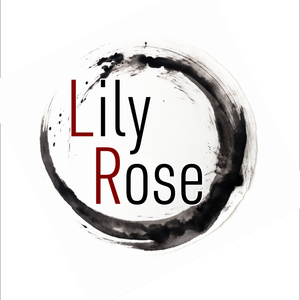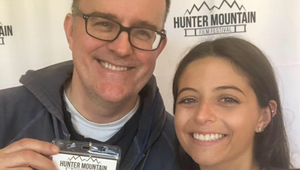
The VFX Factor: John Semerad on Adding Value to a Film without Breaking the Bank

At eighteen John Semerad attended Pratt Institute to become the next great American illustrator. The fine art career quickly gave way to a career in computers and special effects.
QuietMan was started a few years later. An innovative company with many firsts. The first Beatles music video, the first primetime Emmy for a TV commercial, the first five second TV commercials. QuietMan has won virtually every advertising award, Emmys and even a Grammy. The collective has worked on over 100 Super Bowl commercials.
QuietMan don’t really keep track but it has won multiple Cannes Lions including best of show. Multiple One Show pencils including best of show. Dozens of Clios. QuietMan has been in the AICP Show which means its in the permanent collection at MOMA.
Recently John Semerad did an animated short that has gotten into over 100 film festivals, won over 30 awards and become academy award eligible. It’s been seen all over the world. Feel free to call him 'an international sensation.'
LBB> What’s the biggest misconception people have about VFX?
John> People often think that visual effects are expensive, but that's not always the case. When done right, VFX can add a lot of value to a film without breaking the bank. On the other hand, if you don't plan well or shoot the VFX poorly, you might end up with a big mess and more expenses down the line. Filmmakers still love using VFX because they can create some amazing visuals and bring impossible concepts to life. Plus, with technology getting better all the time, it's becoming easier and cheaper to make great-looking VFX.
LBB> There are two ends to the VFX spectrum - the invisible post and the big, glossy 'VFX heavy' shots. What are the challenges that come with each of those?
John> The trickiest part of VFX-heavy shots is making sure that the CGI elements look like they belong in the live-action footage. This means the VFX team and the on-set production crew have to work together really closely to get everything just right.
Then there's the massive amount of data that has to be processed and rendered to make the shot look amazing. It can take forever, especially if the shot has lots of fancy animations or super-high-quality textures.
Beyond the technical stuff, VFX also requires tons of creativity and skill. The VFX team has to be able to come up with crazy visual concepts and then make them a reality, often with little guidance from the director. Plus, they need to be able to pivot quickly when the director decides they want something different. It's a wild ride!
LBB> As a VFX person, what should directors be aware of to make sure you do the best possible job for them?
John> Make sure you plan everything out and have a solid execution plan. Don't be afraid to ask your VFX team questions beforehand, and try to stay up-to-date with the latest techniques and technologies. The VFX industry is always changing, so what worked in the past may not be the best option now. You can't just rely on a "fix it in post" approach - that's just asking for trouble!
Working closely with an experienced VFX team and being open to new ideas and approaches can help create some seriously cool visuals that'll impress your audience and add some serious production value to your project.
LBB> VFX is a true craft in the classic sense of the word. Where did you learn your craft?
John> I learned my craft at art school where I majored in drawing. Technology and trends are always changing, so if you fall behind, you're gonna be left in the dust. My daughter, who happens to be my producer, was watching a podcast and said, "I thought you knew everything!" And I was like, "This is how I learn everything!" You gotta keep an open mind and always be willing to learn.
Back in the day, it was harder to learn new things because you had to rely on other artists or equipment manufacturers to share their knowledge. But now with YouTube and podcasts, you can learn so much online. I personally love Autodesk's YouTube channel, it's a lifesaver.
I remember my friend saying, "Every time I figure out how to do something, they come up with something new!" And I was like, "Don't you wanna be the one coming up with new stuff?"
If you're not willing to continuously learn and improve your craft, you're gonna have a hard time in the art and technology industry.
LBB> Think about the very, very start of a project. What is your process for that? Do you have a similar starting point for all projects?
John> The best part about working in this industry is that it's always changing, and each day brings something new and exciting. You never know what kind of project you'll be working on next, which keeps things fresh and interesting.
When we start a new project, there are always a lot of questions that come up right away, like how we're going to execute the idea, what it will look like in the end, and how much it's going to cost. To answer these questions, we usually create a treatment that outlines our approach and a storyboard that shows the camera angles and set design. We don't usually create a pre-viz until after we've been awarded the job, though.
One thing I'm really good at is understanding the entire production process. I once worked with an Academy Award-winning cinematographer, and I created a pre-viz that included actual lenses, dolly tracks, and angles. He was a bit skeptical at first, but when we set up the shot according to my specs, everything lined up perfectly. After that, we became best friends!
LBB> We imagine that one of the trickiest things with VFX is, time issues aside, deciding when a project is finished! How do you navigate that?
John> Quentin Tarantino once said, "The worst finished script is better than your great idea," while James Cameron emphasized that "great is better than perfect." Elon Musk also noted that out of thousands of rockets designed, less than 100 have successfully flown. My former professor once said that it takes two people to do a painting - one to paint and the other to determine when it's done.
This situation can be challenging because some people believe that they are doing a good job by constantly critiquing and improving their work. However, it takes discipline to begin, continue, and ultimately complete a project. Many individuals lack the necessary discipline, often running out of either money or time.
LBB> Is there a piece of technology or software that's particularly exciting you in VFX? Why?
John> In my opinion, the AutoDesk Flame remains the top-of-the-line equipment in the market, capable of handling any task with ease. Its versatility as both a design and finishing tool is unmatched by any other software.
Machine learning and artificial intelligence are crucial to staying ahead of the curve. Innovation is key, and this field provides some of the most innovative solutions for various tasks such as matte creation, image cleanup, and image generation. If you haven't started utilizing these technologies, you are already behind in the game.
LBB> And as real time tech and games engines become ever faster and more sophisticated, how do you see that shaping or changing the role of VFX and its place in the production pipeline (e.g. thinking about things like virtual production)?
John> To remain competitive in the industry, it's essential to have access to powerful rendering tools. Unreal Engine and other render farms are prime examples of the immense computing power that is available to everyone. Using these tools can significantly improve the quality and speed of your final product, which is critical in a highly competitive market.
While back light and translight have been around since the beginning of film, they have been largely replaced by newer technologies like green screens and virtual sets. Video walls and other virtual set technologies provide a more immersive experience for both actors and viewers, allowing for greater flexibility in production and post-production. These new technologies also offer more opportunities for creativity and innovation in filmmaking, which is essential for staying ahead of the competition.
LBB> VFX is a craft that relies on you really looking at nature - how light works, how gravity works, the mannerisms of a kind of creature, how crowds work, skeletons, explosions… whether its animation or compositing or anything else… So how do you like to approach the research side of your job? What’s the most random or intriguing thing you’ve learned from working on a project?
John> Using photographic or scanned elements can add a level of realism to a project that is difficult to achieve through entirely digital means. By incorporating real-world objects, textures, and lighting, you can create a more immersive and believable environment for your viewers.
For example, when tasked with creating an elephant dance for a General Electric project, the team spent a full day at a petting zoo in Connecticut sketching and studying the movements of real elephants. By observing and studying the actual animal, they were able to create a more authentic and believable dance sequence for their project.
However, working with real-world elements does come with its challenges. Spending an entire day with elephants can result in some unwanted odors and require some extra cleaning up afterward. But, for those who strive for authenticity and realism in their work, the effort is well worth it.













